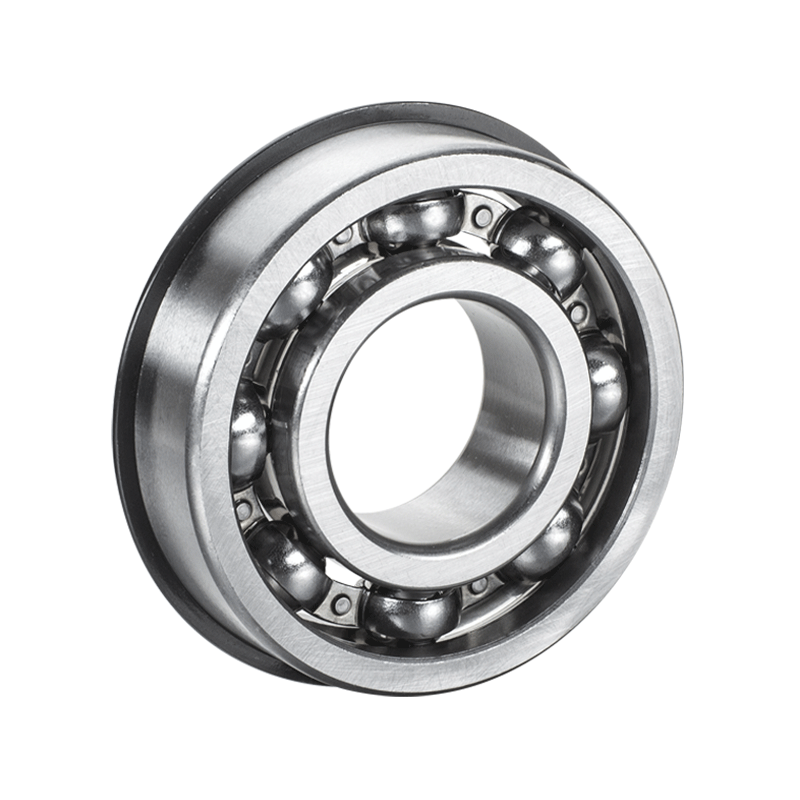The speed and load capacity of deep groove ball bearings are crucial factors in determining their suitability for specific applications. Here's an overview of how speed and load capacity vary and the factors to consider:
Speed Capacity:
1.Limiting Speed: The limiting speed of a deep groove ball bearing is the velocity threshold beyond which the interplay of centrifugal forces, lubrication effectiveness, and internal clearances can lead to detrimental effects.
It is intricately tied to the specific design nuances of the bearing, including the choice of ball types, the configuration of raceways, and the overall geometry.
2.Bearing Design: High-speed applications demand bearings designed with a laser focus on minimizing friction, heat generation, and internal clearances.
Angular contact bearings, for instance, excel in scenarios where reduced contact angles and precision geometries are critical for achieving and maintaining high rotational speeds.
Thin-section bearings, characterized by their slim profiles, are engineered to minimize inertia and facilitate rapid acceleration and deceleration.
3.Lubrication: The lubrication regime adopted plays a pivotal role in dictating the bearing's ability to sustain high-speed operations.
The type of lubricant, its viscosity, and the frequency of replenishment or recirculation are parameters meticulously considered to maintain an optimal balance between minimizing friction and preventing overheating.
Automated lubrication systems, incorporating real-time monitoring and dispensing, are increasingly embraced to ensure consistent and precise lubrication in dynamic operating conditions.
4.Cage Design: The cage, often an unsung hero in bearing performance, assumes a critical role in maintaining ball separation and minimizing frictional losses during high-speed rotations.
Advanced materials such as high-strength polymers or lightweight alloys are strategically chosen for cage construction to mitigate the centrifugal forces experienced at elevated speeds.
Precision-molded cage designs with well-defined pockets are deployed to enhance ball stability, allowing for sustained high-speed operation without compromising structural integrity.
5.Alignment: Achieving and preserving proper alignment in high-speed applications is a non-negotiable prerequisite for optimum bearing performance.
Misalignment, even in minuscule degrees, can exponentially escalate friction, heat generation, and wear.
Utilizing cutting-edge laser alignment tools and adhering to meticulous mounting procedures are essential practices in maintaining the necessary precision for high-speed environments.
Load Capacity:
1.Dynamic Load Capacity: Dynamic load capacity is the dynamic force threshold that a bearing can endure during motion without succumbing to premature fatigue failure.
It involves a complex interplay of factors, including bearing geometry, material properties, lubrication dynamics, and the anticipated operational conditions.
Engineers meticulously calculate and leverage dynamic load ratings provided by manufacturers to ensure bearings operate within their designed load-carrying capabilities.
2.Static Load Capacity: Static load capacity is the maximum axial or radial force that a stationary bearing can withstand without succumbing to permanent deformation.
This parameter is of utmost importance in applications where the bearing might experience prolonged periods of stationary loading.
It serves as a safeguard against issues such as brinelling or plastic deformation of the raceways and rolling elements due to sustained high forces.
3.Application Load Profile: A granular understanding of the load distribution within a specific application is essential for selecting the apt bearing type.
Whether subjected to predominantly radial, axial, or combined loads, bearings need to be chosen with a nuanced consideration of these factors to ensure even distribution and prevent premature wear or failure.
4.Temperature: High loads invariably generate heat, necessitating a meticulous examination of the bearing's load-carrying capabilities under specific temperature conditions.
Thermal modeling and finite element analysis tools are harnessed to predict and optimize temperature rise, crucial for selecting bearings that can sustain their load-bearing capacities without compromise in varying thermal environments.
Single Row Deep Groove Ball Bearings

Single Row Deep Groove Ball Bearings



 English
English Deutsch
Deutsch























